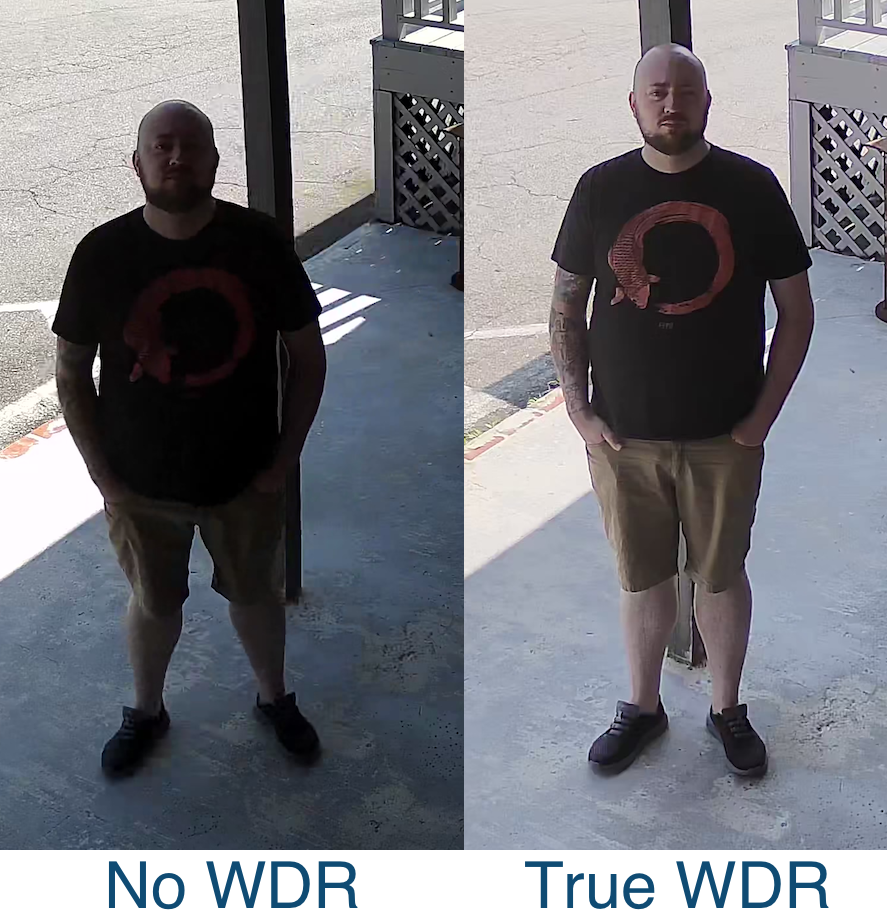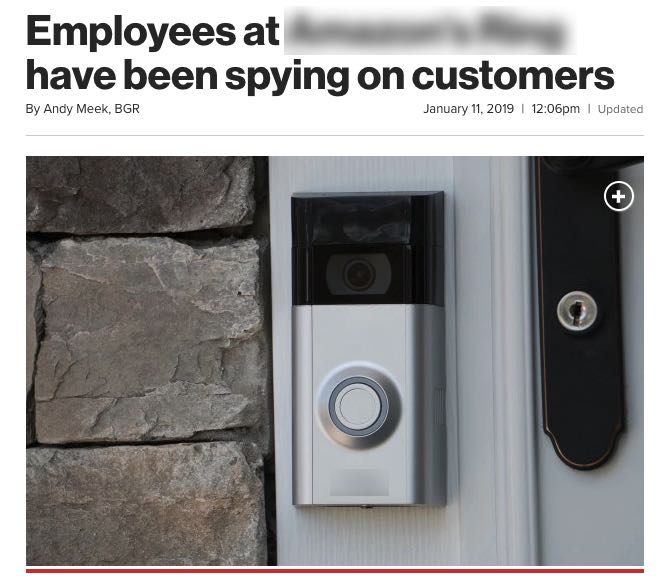Exposing the Surveillance Industry Shortchange
The Top 13 ways that sneaky marketing execs in the surveillance industry get you to throw your money away

1. Selling Security Cameras that have been compromised by Viruses and Botnets


Many Security Cameras are being used by Hostile Foreign Actors to Attack ISPs, Nuclear Power Plants, and Military Networks
Many low-quality brands, and even some big-name ones, are being shipped with compromised code and backdoor accounts.
This support guide talks about what's happening, how we try to prevent it by creating a network within a network to hide SCW cameras from hackers, how you can prevent it by changing the default password as soon as you get the device and other best practices.
EXPOSED - How Low-Quality Security Cameras are Being Used to Attack Critical USA Infrastructure

Loss of Privacy and Loss of Video is the least of the concerns.
2. Trademarking snappy sounding nonsense.
One of the biggest ploys that began in late 2017 was for a company to trademark a snappy name for a feature that nearly every camera has. Since it isn't legal for other brands to use that trademarked text on their products, it sounds like they don't have that feature. In reality, most cameras do.

"Color Night Vision"™ is a Trademark not a Technology
Nearly every professional IP camera has a setting to force color mode at night and disable infrared night vision, but that doesn't mean you should use it.
EXPOSED - "Color Night Vision"™ is a Trademark, not a Technology and it doesn't work

"Spectrum Vision True WDR" is a snappy name for a mystery spec
For decades, higher-end cameras have included WDR. WDR takes a low light optimized and a high light optimized image setting and stitches the two photos into one image to prevent shadows from being too dark. The industry-standard way of describing WDR is to state whether it is digital or optical with optical WDR being better since optical WDR also still has digital WDR. The industry-standard way to describe the WDR spec is to state the decibels (dB) that the optical WDR uses, with higher decibel ratings being better. Rather than report any of these statistics, all we have here is a marketing term.
EXPOSED - "Spectrum Vision True WDR" substitutes a snappy term for actual info about the specs
"True HDR" is a cynical, intentionally misleading phrase
Digital WDR has sometimes been called HDR which can be confusing. Savvy consumers could tell the difference between DWDR or HDR from "True" Optical WDR because the word "true" was used to differentiate DWDR/HDR (digital) from Optical WDR (which is better). Now one company is saying that they have "True HDR," which is incredibly misleading.
3. Cheap components that don't deliver.

Cameras with cheap processors that use old compression
We often get asked why our cameras look so much better than other brands - even when both are 1080P.
The difference is that many cheap cameras lack the processing power and manufacturers don't want to pay the license fees for modern file compression. Old compression and slow processors make the video look blocky and have what are called "artifacts" which look like multi-colored pixelated "edges."
EXPOSED - Compression: Not All 1080P Cameras are Created Equal

Looks terrible, but technically still 1080P!

NVRs with low bitrates
This shortchange is extremely pervasive. Many companies that sell NVRs hide the most important technical spec in their NVRs: the incoming bitrate of the processor. Incoming bitrate is the amount of video data that can be processed per second. Low bitrate NVRs can only record in 1080P when you connect a few cameras, when you connect all the cameras, you have to lower the resolution.
A "1080P" unit that can only record at 720P when all the cameras are connected is recording less than half the resolution it promised.
4. The "Batteries are Better" Lie

Battery Powered Cameras are increasing in popularity. They can save you about 60% of the total project cost, but they just won't protect you very well
Wireless battery operated cameras are increasingly playing a part in the security industry, and a battery-powered doorbell camera can be a great device for your home. Just don't expect it to be a security device. There are benefits and drawbacks of using them in your security system, however. They certainly have a place, but shouldn't be the only devices you use.
5. 1080P Lite (1080L or 1080N or 960P) is not 1080P

No consumer would be ok with ordering a 1080P TV and getting a 720P installed sideways at half the frames per second.
1080L is a little less than half the resolution of 1080P and usually is recorded at less than half as many frames per second (FPS).
6. Marketing claims using "New Math"

0.89% more is NOT "double the resolution"
Some companies make terrible, mathematically-impossible, marketing claims that are 100% opposite the facts. There are many different versions of this same "shortchange," but in this one, we highlight how an unnamed billion-dollar company is trying to assert that 2K (in green) on the left is twice the quality of 1080P (in red).
7. People still Aggressively Selling Analog, while Desperately Trying to Make it Sound Like it's Not Analog
It's 2021. You should be done with analog. Retailers, it's ok to keep some in stock to help people with legacy systems, but it's time to stop marketing bunny-ears TV-quality cameras like they solve someone's security threats.

But, it has "1000 TVL!"
TVL or television lines is usually a term reserved for an analog camera's resolution. A 1000 TVL camera has a better lens than a 700TVL camera, that's true. The problem with 1000 TVL is that an analog DVR can't record any higher than 976 x 582 resolution. That's a little around 700 TVL. 1000 TVL sounds like "better than 720 TVL," but it will produce the exact same recording.

But it has "Ultra-High Resolution"
"Ultra-High Resolution" sounds a lot like a real industry term "Ultra High Definition," but "Ultra-High Resolution" is a phrase without meaning.
8. Selling HD-SDI or HD-CVI or HD-Analog products!

Most major manufacturers are abandoning the HD-SDI technology due to the high cost of production.
HD-SDI was replaced by HD-CVI and then HD-TVI replaced them both.
HD-SDI never delivered the promised results, to begin with, and HD-CVI was only ever made by one manufacturer. Avoid the "Betamax" of surveillance; don't box yourself into failed standards.
9. Every camera is a "license plate" camera!

The term "License plate cameras" is used rather flippantly by the security camera industry.
At SCW, we try not to use the misleading term "License Plate Camera." The term just doesn't mean anything in particular and sounds a lot like "License Plate Recognition" which is a software feature that you pay monthly for from a VMS.
EXPOSED - What they don't tell you about "License Plate Cameras"
11. Being Mischievous with how they report Reviews

Claiming Review Stats that don't Reflect their Actual Review Stats
Be careful when shopping online. Some companies publish inaccurate review scores.
Rather than publishing live review stats that update automatically, these companies create an image of their reviews that doesn't match reality.

Are CCTV-Reviews.com #fakenews reviews?
CCTV-Reviews.com has a lot of negative reviews about a slew of security camera retailers but suspiciously has nothing but glowing praise for only one company. The CEO of that company just happens to own the CCTV-Reviews.com domain.
12. Multiple Claims in that "Hybrid Cloud Video Security" Webinar

Honestly, we're flabbergasted that one webinar produced so many claims that needed to be investigated. The company that made this webinar mostly goes after enterprise clients.
EXPOSED - No, NVRs are not "A Single Point of Failure"
EXPOSED - No, NVRs are not "Outdated"
EXPOSED - No Gartner, Forester, and Symantec did not say NVRs are the TOP Security Risk
EXPOSED - No, HIPAA Compliance Doesn't Require 90 Days of Video Surveillance Footage
EXPOSED - No, You Probably Don't Need 90 Days of Video Surveillance Footage for PCI Compliance
13. Calling a POE NVR an "HD Video Appliance" and Then Charging Double for It

This shortchange mostly goes after enterprise clients.
The companies using these "video appliance" names want to charge these larger clients more money for their products, but they don't want people comparing features with other providers, so they ignore industry standards and norms and come up with their own lingo.
EXPOSED - How the only difference between a POE NVR and an "HD Video Appliance is price
14. Faking their surveillance footage by recording with a professional DSLR camera
Real surveillance footage has text overlays, like so:

Don't fall for images and video shot with a DSLR:

Just Getting Started with Security Cameras?
Get the SCW Beginner's Guide!
New to security camera systems? Confused by Analog vs IP? Bullet vs Dome? Indoor vs Outdoor? Don't even know what PTZ means?
No problem! Download the SCW Beginner's Guide and get all your questions answered right away!

